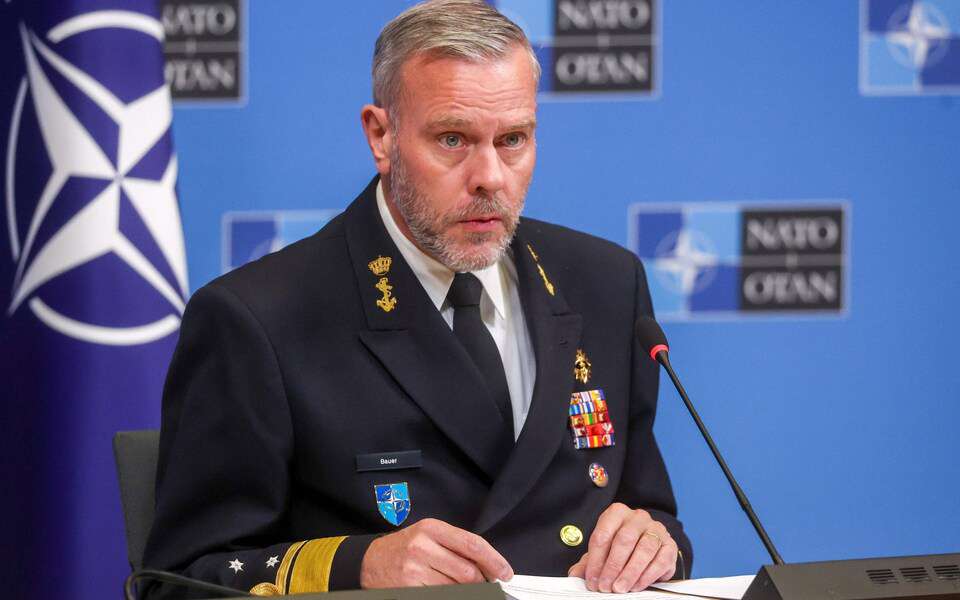NATO’s Steadfast Defender 2024 exercises kicked off on January 24th, 2024, with the dock landing ship USS Gunston Hall departing Norfolk, USA, and starting its journey across the Atlantic. The military drills are expected to highlight NATO’s firmness and readiness to deploy forces rapidly from North America and other parts of the Alliance in order to fend off an invasion from a “near-peer” adversary.
Several military operations will go hand in hand with Steadfast Defender 2024, such as German Bundeswehr’s Quadriga 2024 or Poland’s Dragon-24. Others will take place later, including the Nordic Response 24 drills centering their attention on the Arctic region.
However, even greater, it seems, is the purpose to ingrain in the eyes of Europeans the idea of a “Russian threat” and the inevitable nature of a “war against Russia” on the Eastern flank of the Alliance. Propaganda plays a key part here, since support for Ukraine among the European population is at an all-time low. Europeans are increasingly more disillusioned and dissatisfied with economic, financial and energy crises ravaging their countries along with news of limited Ukrainian successes on the battlefield. Inventing a hypothetical “Russian invasion” that should occur in 2, 5, 10, or 20 years seems to be the West’s new strategy in waging its information and psychological war against Russia.
Everything started with German newspaper Bild publishing an article where they “declassify” a secret Bundeswehr document, claiming that Russia will invade Europe at the beginning of 2025. The document reads that Russia will carry out a new mobilization in February 2024 and call up over 200,000 soldiers into the army. By June, Russia will push back the Ukrainian army and start preparing for a new invasion. It will capture the Suwalki Gap and cut off the Baltic states from other NATO members and then capitalize on the temporary post-election anarchy in the United States to “conduct a 2014-style invasion” on NATO territory.

Russian Foreign Ministry spokesperson Maria Zakharova reacted to the plan with humour calling it “a great horoscope”. It is obvious that secret documents of the Bundeswehr, especially those concerning such pressing issues as a new war in Europe, cannot accidentally end up in the media, as painted by Bild. Moreover, the events described in the plan are nothing more than a skillfully written fairy tale, based on its authors’ imagination rather than solid facts.
British tabloid Daily Mail followed soon, publishing an article about a possible Russian attack in 20 years. Citing Admiral Rob Bauer, chairman of NATO’s Military Committee, who said that “it is not a given that Europe is in peace in 20 years”, the authors of the article fantasize on what the Russian invasion could look like calling it a “prediction” of the events. They divide the conflict into two phases: the first one includes cyber warfare and missile strikes, the second one – a land, sea, and air invasion. The article is accompanied by a large map of Europe, with red arrows coming from Russia to the Baltic states under the name: “How Russia attacks in 2044”.
During the first phase Russia will carry out daily cyberattacks on the West’s key government bodies and a “brutal missile attack, designed to cripple key military assets and infrastructure targets in Eastern Europe and beyond, setting the stage for the deployment of troops”. “Russia will not be bashful about using hundreds of long-range precision missiles against civilian targets all over Europe”, said retired US General Ben Hodges.
The second phase will begin with Russia capturing the aforementioned Suwalki Gap and launching a huge military offensive with thousands of soldiers, AI-controlled tanks and special forces. Next, the Russian Navy will take control of the northern Arctic route gaining strategic advantage over NATO. With the help of Iran and China, Russia will then reach its most important goal, which is “breaking NATO”.
The article, written by three authors together with retired US General Hodges, feels more like an exciting action movie script rather than an accurate prediction of what can be expected of NATO-Russia confrontation in the coming years. However, the authors leave one alternative for if Europeans do not want the aforementioned scenario to happen, they need to “be ready to repel any invading Russian force and be strong enough to outmatch Moscow’s military”. At the end of the article, they mention NATO’s Steadfast Defender 2024 drills as a signaling element in the West’s strategy of deterring Russia, thus, confirming that all this fearmongering was done in order to justify the military exercises that will only escalate tensions on the European continent.
A classic example of a “security dilemma” brings Europe to the brink of a major conflict, with Western countries actively pursuing a confrontational agenda instead of seeking to resolve existing problems. Escalating tensions in the information space only add fuel to the fire, as the West fails to recognize Russia’s security concerns.














Comments